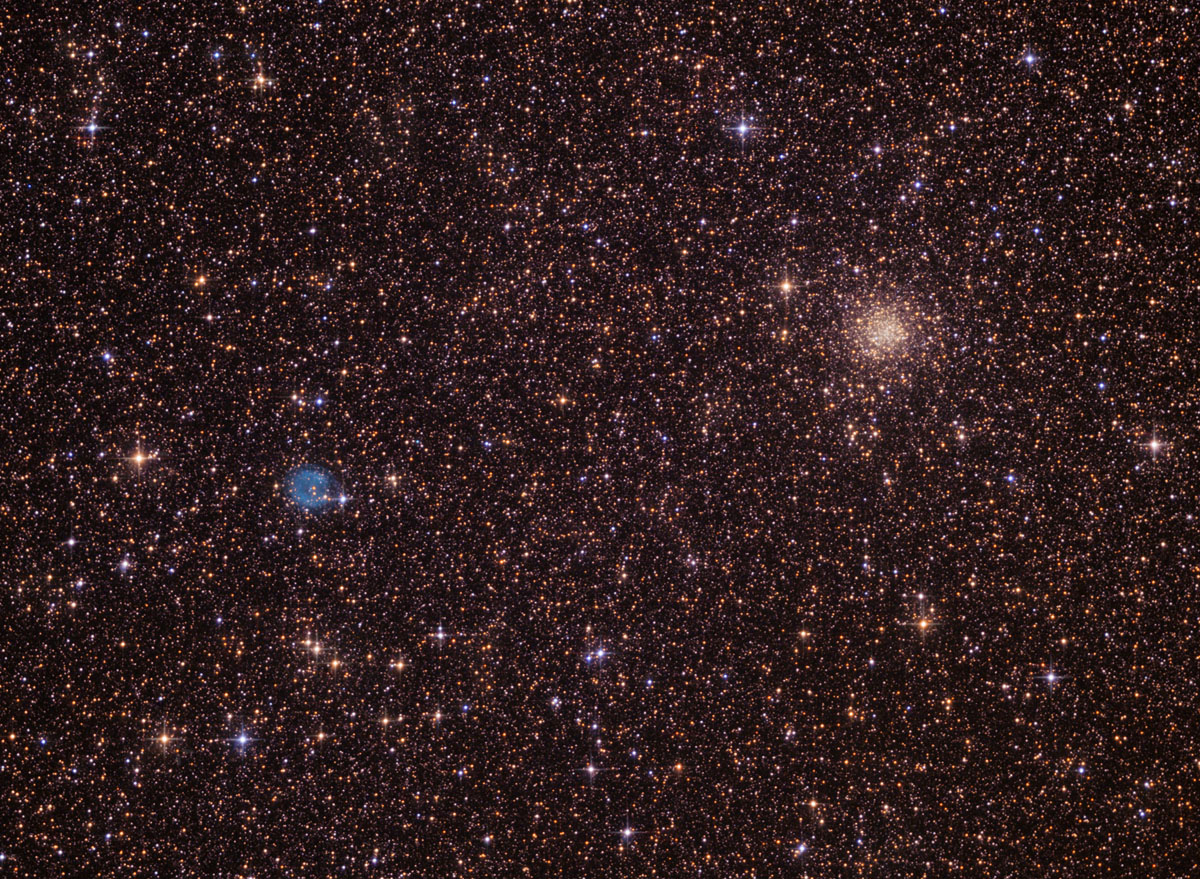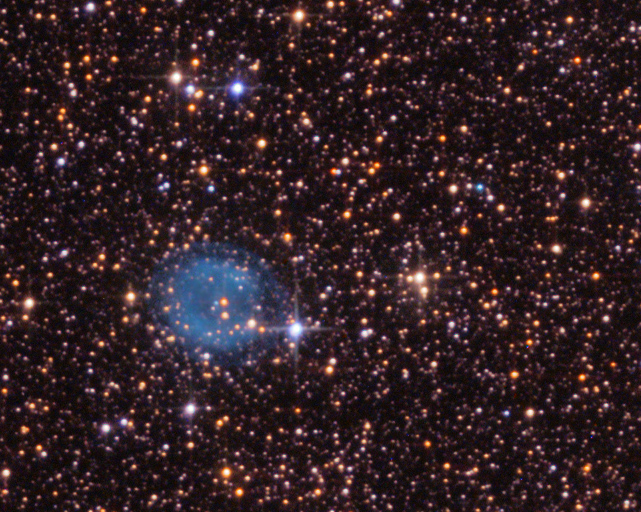
| HOME |
IC 1295 & NGC 6712
PLANETARY NEBULA AND GLOBULAR CLUSTER IN SCUTUM
(Image Centred at ra 18h:54m / dec -08:44)
CLICK THE IMAGE FOR A HIGH RESOLUTION VIEW
May 2014 - Camping La Porteņa, San Antonio de Areco, Buenos Aires, Argentina
DATA
Type: Planetary Nebula and Globular Cluster
Apparent magnitude: 15 for IC 1295 and 8.2 for NGC 6712
Apparent diameter: 1.4 and 7.2 arc minutes respectively
Distance: 3300 light years and 22.500 light years respectively
IMAGE INFORMATION
SCOPE: 8" Orion Optics UK Mirror with Televue Paracorr (1150 mm focal length)
CAMERA: QSI 583 WS
FILTERS: Baader LRGB
SKY CONDITIONS: rural skies, foggy night
EXPOSURES: LRGB (60,30,30,30)
OBJECT DESCRIPTION AND IMAGE SESSION
A very nice pair that fits in the field of view of the 8 inches OOUK reflector and the QSI 583 chip combination. Both objects are unrelated, however they present a particular nice frame which is enhanced by a very dense star field background. NGC 6712 was probably discovered in 1749 by French astronomer Guillaume Le Gentil while investigating the Milky Way region around Aquila. He described the object as a "true nebula". In 1830 John Herschel was de first one to resolve the globular cluster into stars.
IC 1295 consists in a multiple of gaseous shells which were once star atmosphere. The ghostly bubble is surrounding a dying dwarf star in the center of its structure. Below image shows IC 1295 in 100 % resolution and also PK 25-4.1 which is the cyan dot at the upper right.
IC 1295 & PK 25-4.1
(100 % RESOLUTION)
